
Rome was the second stop on our month-long honeymoon in July 2022. We were able to see some of the iconic sites during our 3-day visit. We are sure there is much more to see and do, and there are bound to be some great day trips towards Naples.
Here is what you’ll find in this guide (click to jump ahead):
- When to Visit
- Where to Stay
- Things to Do
- A map to help you plan your itinerary
- Other Things to Do (that we haven’t done)
If you want to check out where we ate during our 3 days, our gluten-free guide is here.
When’s the best time to visit Rome?
We travelled to Rome in July, and it was hot and humid! It was also busy with tourists, so we do recommend trying to go pretty much any time other than July (or August). Many businesses close in August for vacation, so you may experience closed shops and restaurants. The winter can be cool, but as a major city you won’t find closures like you may find in other Italian towns. Restaurants and sites will still be open but may have reduced hours, and you’ll likely find cheaper prices (December – February). You will find the best weather in the spring and fall, from April – June and September – early November.
Where to stay?
We decided to stay at an AirBNB located about a 10-minute walk north of Vatican City, which I guess is technically the Prati neighbourhood. We chose this area because it was set a bit away from the noise and busy-ness of the main sites. Since we were visiting during the summer season, and we waited a little last minute to book, we also found that options near the tourist sites (Spanish Steps, Trevi Fountain, Pantheon) were quite expensive for what you were getting. Another plus for us in this area was its proximity to the metro and to a gluten free grocery store (Celiachiamo Lab). We chose an AirBNB over a hotel because we wanted to be able to cook our own breakfasts (gluten-free breakfast is often difficult to find).
Many guides recommend staying in the historic center (or Centro Storico) if it’s your first time in Rome. Otherwise, the Trastevere or Monti neighbourhoods seem to come up again and again for great areas to stay.
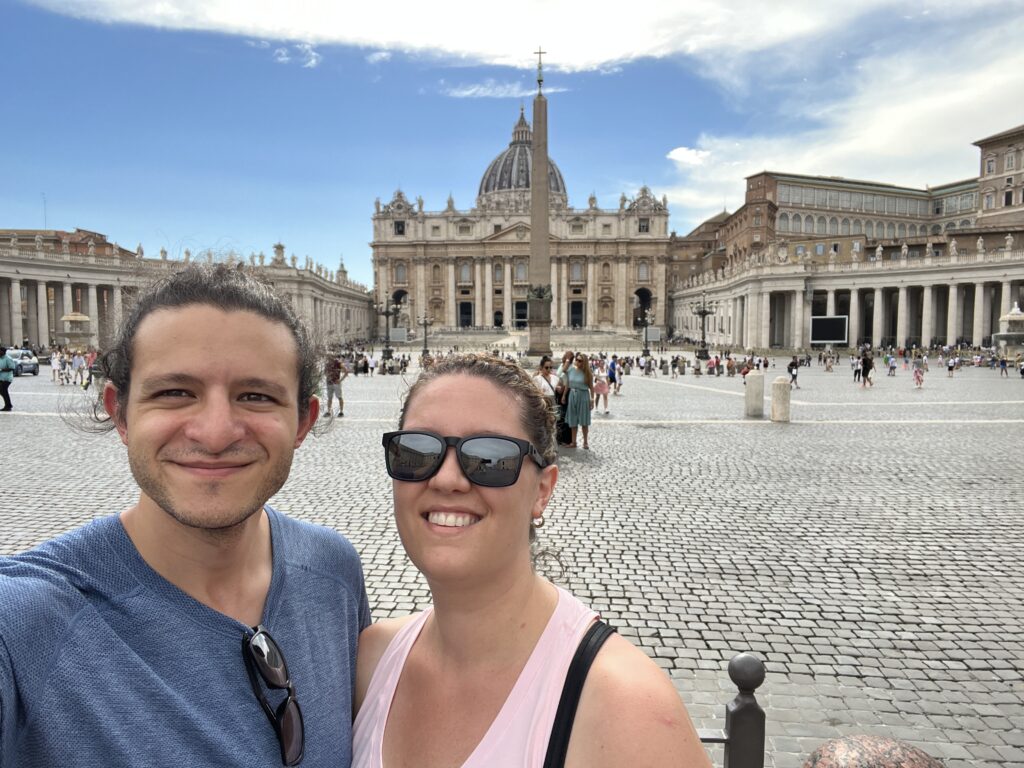
THINGS TO SEE & DO in ROME:
1. Colosseum
A must-see if you’re visiting Rome, is the Colosseum, ancient site of many gladiator battles. You’ve likely seen pictures, but it is quite magnificent in person. As one of the main attractions in the city, lineups can be long, so it is recommended that you purchase tickets in advance. There are many pre-booked tours and tickets you can choose from, including tours that combine the Colosseum with the Roman Forum. We chose to do a night tour of the Colosseum, which included the arena floor and underground. The app we used to book was Get Your Guide, which was put on by Italy with Family. The night tour helped us beat the daytime heat, and we got the bonus of experiencing the Colosseum during daylight and all lit up at night. If you want to book tickets through their official website, go here.
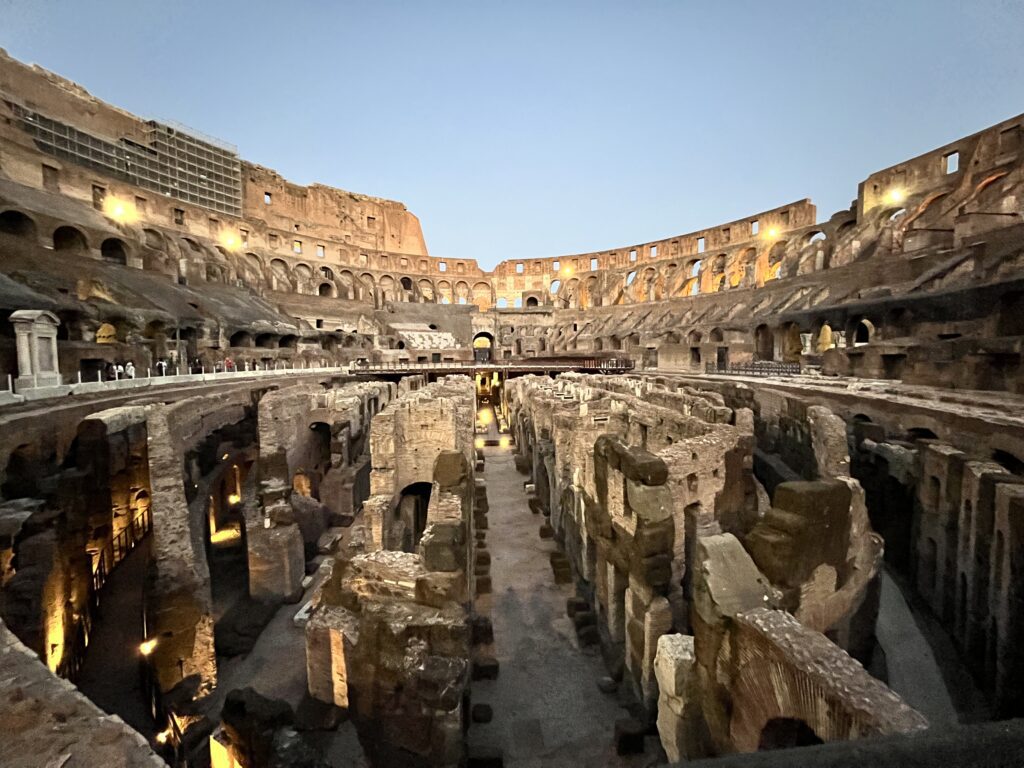

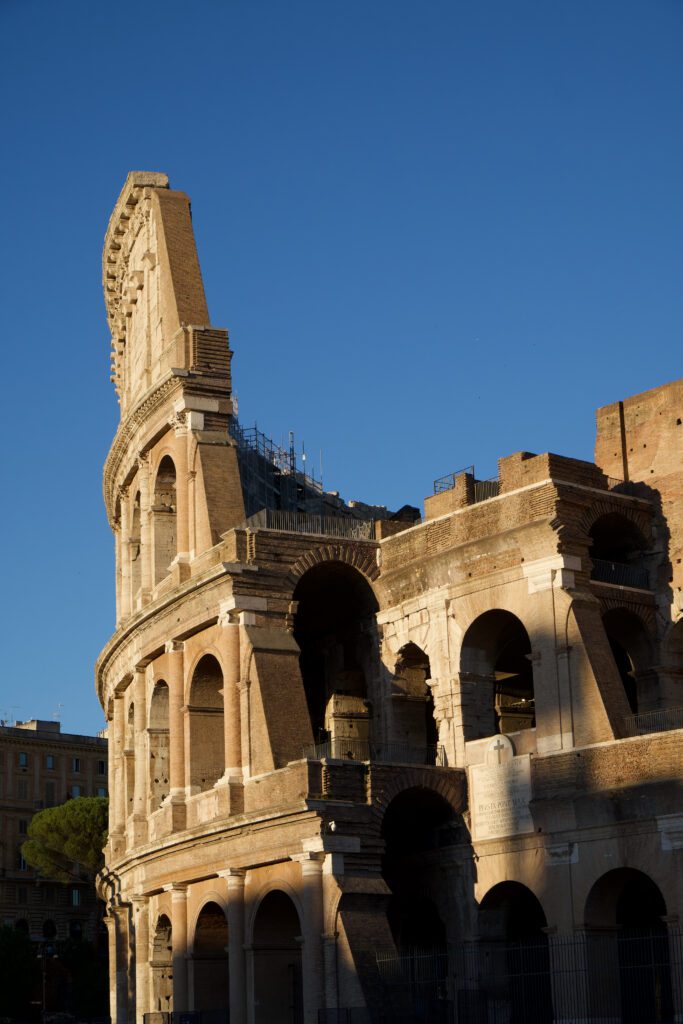
2. Vatican Museums & Sistine Chapel
Home of the governing body of the Roman Catholic Church (and the pope), the Vatican Museums are worth visiting even if you are not religious. There are 54 galleries, courtyards, and hallways. The Sistine Chapel is breathtaking, and the frescos and sculptures are lavish. One of the busiest tourist locations in Rome, you can book an early morning tour or after-hours evening tour to beat the crowds. We opted for a 4-hour early morning tour by Walks of Italy, called the “Pristine Sistine”, which was a small group tour that included St. Peter’s Basilica.



Centered in Vatican City is St. Peter’s Basilica. This is an active church with daily Mass services, and it is free to enter. There is a strict dress code is in place – you must cover your knees and shoulders, as well as any tattoos. If you are not properly covered, you will be handed a covering upon entry. There are almost always long lineups, so it is suggested to arrive early in the morning when it opens or join a tour. We had a combination tour that included St. Peter’s Basilica with the Vatican Museum, through Walks of Italy. This meant we went through a shortcut to get to the Basilica after the Vatican. We were surprised by St. Peter’s Basilica – it was much larger than expected, and so opulent!



4. Roman Forum & Palatine Hill
A massive archaeological site in Rome, the Roman Forum houses some of Ancient Rome’s most important structures – shrines, monuments, and government buildings. This whole area was way bigger than we expected, and it took much longer to see than we through it would. We arrived right at opening time (9:00am) and were so glad we did. The tour groups start coming through around 10:00am after they have completed the Colosseum. There is also very little shade, so going early can help you avoid the hottest part of the day. You can buy tickets off the official website in advance, get access through a tour, or buy tickets there. We bought in advance through the official ticketing website, but there was no line when we arrived at 9:00am, so we probably could have just bought tickets on site.





You’ll find the Trevi Fountain on pretty much any list of things to do in Rome, and for good reason – it is magnificent! The detail is exquisite, and despite the crowds when we were there, I was still glad we made our way through to see this iconic fountain. It is centered in the Trevi district where there are many hotels and shopping, so crowds are all but guaranteed. Visiting early morning or late at night may allow you to see the fountain with less people around. You don’t need tickets to see the fountain.

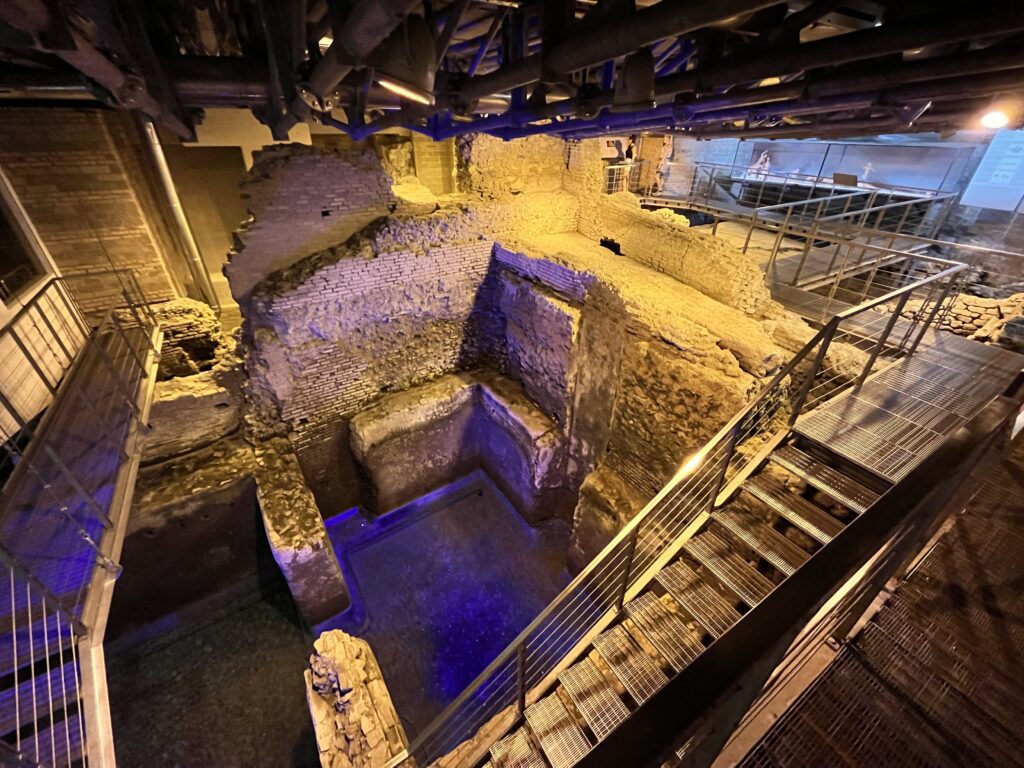
Around the corner from the Trevi Fountain, you will find this tiny museum. It contains the remains of an aqueduct that is underneath the fountain! We found out about this through American travel blogger Kacie Rose’s Instagram page and bought tickets at the museum, though you must buy tickets in advance on weekends and holidays. We had to wait about 15 minutes before we could enter, as only a limited number of people can go in at a time. Very reasonably priced to go in, the museum will only take you about 30 minutes.
7. Spanish Steps (Piazza di Spagna)
A popular location in Rome, the Spanish Steps is located amongst the city’s shopping district. You can climb the steps, but you cannot sit on them! There is a monastery at the top of the steps, which if you climb to can give you an incredible view. You can also find a fountain at the base of the steps. Walk the short distance from Trevi Fountain or take the metro to the “Spagna” station to get here. You don’t need tickets to see the Spanish Steps.
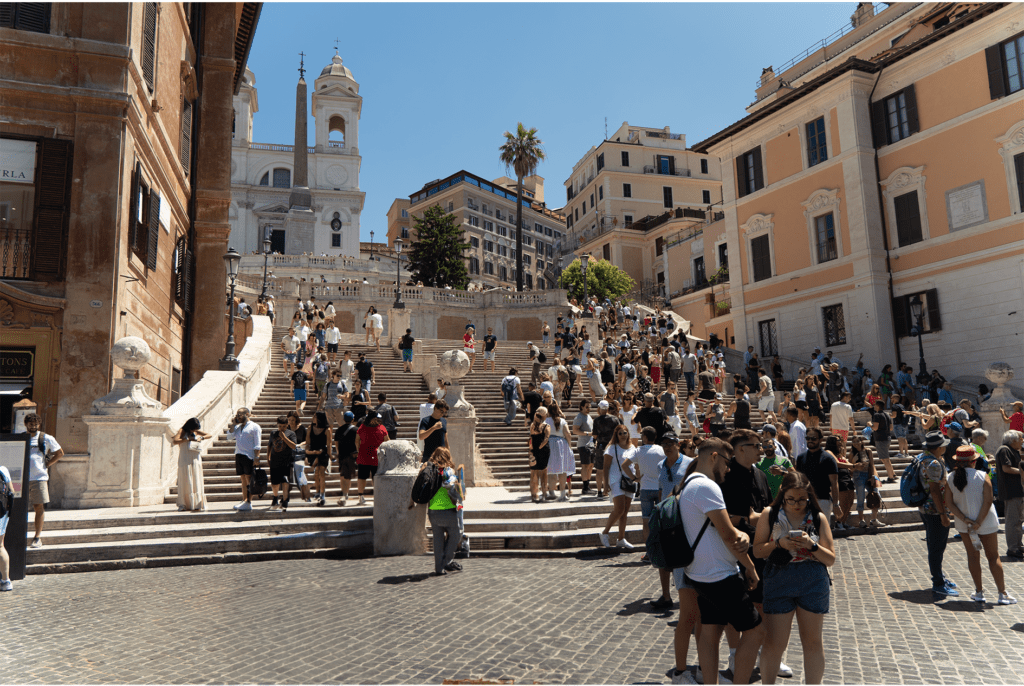
Built to house a remarkable art collection, the Borghese Gallery is home to some extraordinary sculptures, including the “Apollo and Daphne”. With only 2 hours to explore, you will want to make sure to keep moving so you don’t miss anything (you can always go back to pieces you find interesting). When we visited, you had to book tickets ahead of time on their official site. Each ticket was for a 2-hour time slot, which kept crowds in the gallery to a minimum. We were pleasantly surprised by this gallery and felt the 2 hour time restriction was plenty to see the collection.



A giant urban park with a lake and gardens, this is a popular spot for locals to run or picnic with their families. It is free to enter, and you can wander around at your leisure. This park is quite large (it has a zoo!), so expect to wander here for at least an hour. Make sure you pass by the Temple of Aesculapius, sitting in the middle of a small lake where you can rent small boats to paddle around. We did find the “garden” aspect to be a bit lacking, but this could be because it was the middle of a heat wave and so most of it was brown and the fountains were all turned off. You don’t need tickets to visit the Villa Borghese Gardens.

10. Pantheon

One of the best-preserved buildings of ancient Rome is the Pantheon, known for its symmetry and perfect proportions. It is presently a church. Advanced booking is required, which is a recent-ish change. As a result, we did not get to enter the Pantheon, but rather just observe it from the outside. You can book tickets through the official ticket website.
MAP of Things to Do in Rome
HOW TO USE THE MAP: Click on the Wanderlog logo in the bottom right corner to open the full-size map up in a new tab. There, you can choose to just look at one category at a time or see all of the categories on the map at once (click the 3 squares in the top right to choose). You can also export the map to Google Maps, share the map with others, or save the map.
Other Things to Do:
These are things we didn’t get to see during our time in Rome, but came highly recommended on many “Things to do in Rome” lists during our research:
- Wander around Trastevere neighbourhood
- Castel Sant’Angelo (national museum)
- Villa Medici
- Fontana dei Quattro Fiumi (fountain)
- Campo de’ Fiori (neighbourhood)
- Take a food tour or cooking class
